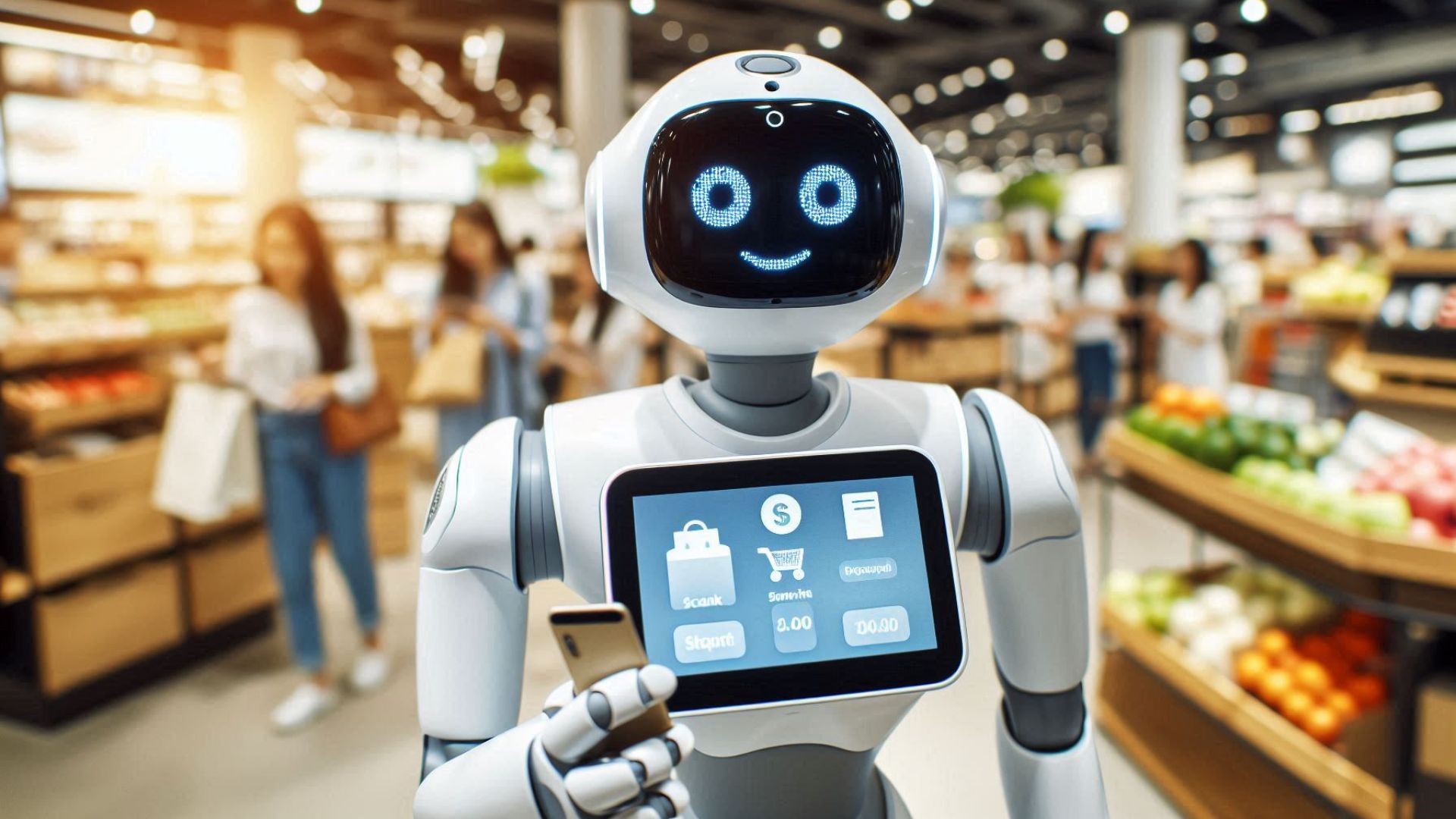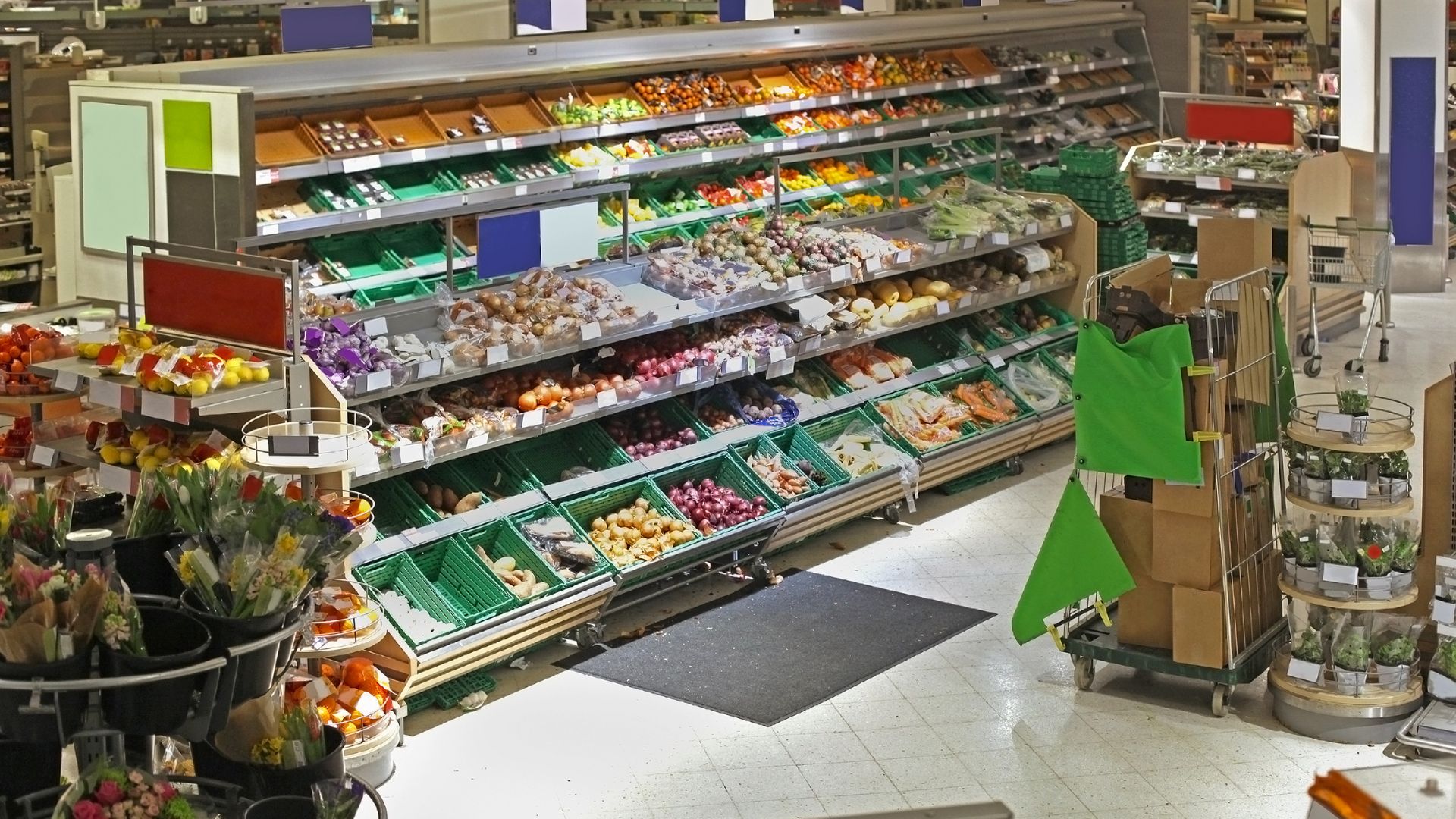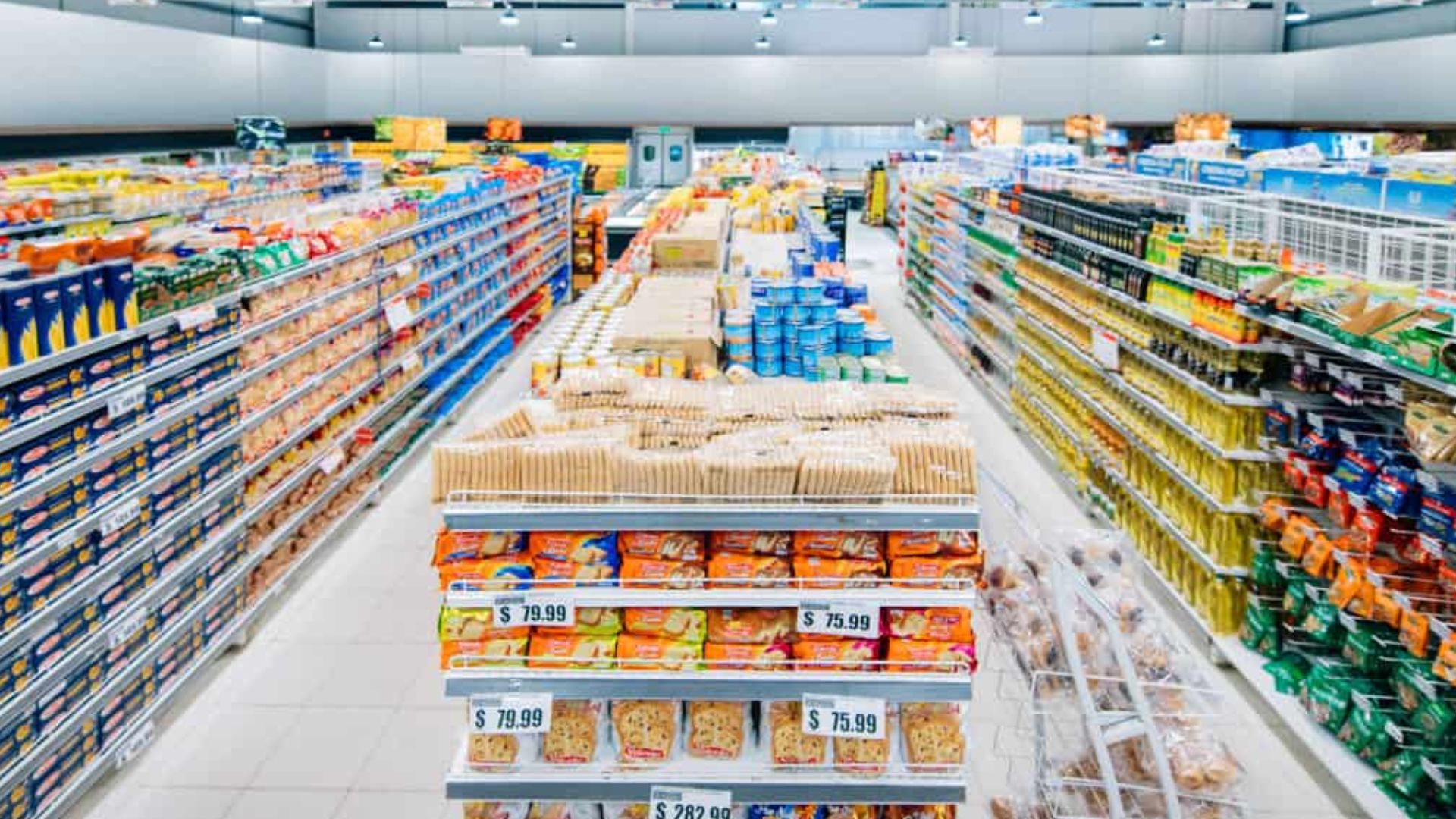The global image recognition market across industries is valued at USD 50.36 billion in 2024 and is projected to reach USD 163.75 billion by 2032, growing at a CAGR of 15.8% from 2025 to 2032.
North America alone led the market in 2023, accounting for 35.23% of the total share, with the U.S. expected to experience significant growth. This is also driven by the increasing adoption of AI technologies in CPG retail execution.
These technologies help in addressing common challenges related to on-shelf stock visibility, planogram compliance, and promotional execution for CPG brands. AI image recognition helps brands primarily by addressing on-shelf availability issues and execution gaps in stores.
In this article, we’ll explore the current state of the AI image recognition market in CPG retail execution, the technologies driving its growth, and the opportunities and challenges businesses face as they implement AI-driven image recognition systems.
Key Takeaways:
- Enhanced Shelf Visibility: AI image recognition ensures accurate tracking of on-shelf stock levels, reducing stockouts and improving product availability in real time.
- Streamlined Planogram Compliance: AI technologies automate planogram checks, ensuring products are correctly displayed according to guidelines across multiple retail locations.
- Improved Promotional Execution: AI monitors promotional displays to ensure they are correctly set up and aligned with marketing campaigns, enhancing brand visibility.
- Operational Efficiency and Growth: AI-driven solutions help CPG brands automate in-store audits, reduce operational costs, and scale operations efficiently across locations.
How Technology is Addressing the Current CPG Challenges
Consumer Packaged Goods (CPG) brands face numerous challenges in today's rapidly evolving retail landscape. As the retail environment becomes more competitive, CPG brands must adapt quickly to meet consumer demands, ensure operational efficiency, and improve the customer experience. This eventually leads to better sales and customer retention.
Here are the most pressing challenges CPG brands face and how technology, especially AI and image recognition, is helping address them.
- On-Shelf Stock Visibility and Planogram Compliance
One of the primary challenges for CPG brands is ensuring that products are always in stock and visible on store shelves. Misplaced products, incorrect facings, or poor shelf alignment can result in missed sales and a suboptimal customer experience.
Product stockouts are also a common issue, leading to lost sales opportunities and poor customer satisfaction. CPG brands are also often unaware of stocking discrepancies that arise due to poor shelf management, out-of-stock products, or incorrect placements.
How Technology is Helping:
- AI Image Recognition: AI-driven image recognition tools can scan shelves in real-time to identify out-of-stock situations or misplaced products. These technologies can alert store staff to replenish stock or realign products according to the planogram.
- Real-time Monitoring: Retail execution software like ParallelDots provides real-time shelf data, enabling brands to monitor on-shelf stock availability and make informed decisions to optimize shelf visibility, planogram compliance, and in-store execution.
- Automation: By automating the process of shelf monitoring and stock visibility, AI reduces human errors and ensures that CPG brands maintain consistent stock levels across all retail locations.
- Promotional Execution
Executing promotions effectively is another significant challenge for CPG brands. Promotions can include discounts, bundled offers, or special displays. However, ensuring these are implemented consistently and correctly across all retail outlets is a challenge for CPG brands. If promotional materials or displays are missing or incorrectly positioned, the brand loses out on potential sales.
How Technology is Helping:
- Automation of Shelf Audits: AI can help automate the process of tracking and verifying promotional executions, ensuring that in-store promotions are delivered according to plan. CPG brands no longer have to rely on manual checks, which are often inconsistent and prone to error.
- Data-Driven Insights: Real-time shelf data enables brands to track the performance of their promotions in specific locations, facilitating a more effective allocation of marketing resources.
- Consumer Demand and Product Unavailability Issues
CPG brands must stay in sync with fluctuating consumer demand, which can vary widely across seasons, regions, and even retail locations. Managing product availability to meet these demands while avoiding overstocking or understocking can be challenging for CPGs. The global supply chain disruptions over the past few years have only highlighted the urgency of this issue.
How Technology is Helping:
- Predictive Analytics: AI-powered predictive analytics help CPG brands forecast demand more accurately by analyzing historical sales data, market trends, and even consumer sentiment. Understanding these demand patterns, brands can better plan their production schedules and stock levels, reducing waste and improving availability.
- Real-time visibility: CPG brands gain real-time visibility into the stores across multiple locations, ensuring more accurate tracking and smarter stock replenishment using AI-ML software and systems.
Predictive analytics and innovative real-time visibility help CPG brands optimize stock levels. At the same time, AI and machine vision technologies are enhancing in-store execution, ensuring products are always in the right place and visible to consumers in real time. These innovations not only improve stock visibility but also ensure that products are placed correctly and available to consumers in real time.
Recent Technology and Applications in CPG Retail Execution
Advancements in the CPG retail industry include the usage of algorithms such as Principal Component Analysis (PCA) and Scale-Invariant Feature Transform (SIFT). These algorithms help CPG brands improve recognition accuracy, meaning the system can identify products more reliably even in cluttered shelf images. The accuracy of image recognition systems is achieved by efficiently processing and interpreting visual data.
This allows CPG brands to manage large product assortments and store networks effectively. The AI image recognition market is thriving, driven by these factors:
- Demand for Automation: As CPG brands aim to reduce human error and increase operational efficiency, they are increasingly adopting automated systems for in-store audits. AI-driven solutions help streamline the auditing process, improving both the speed and accuracy of shelf inspections.
- Advancements in AI: CPG brands can monitor in-store shelves with greater accuracy using deep learning algorithms, neural networks, and convolutional neural networks (CNNs). This ensures products are properly placed according to planograms and readily available for consumers. This helps with reducing stockouts and missed sales opportunities.
- Improved Shelf Visibility: Real-time monitoring of shelf conditions allows brands to make quick, data-driven decisions. Whether it’s ensuring products are correctly stocked or verifying promotional displays are in place. AI image recognition systems help maintain the quality of CPG retail execution at scale.
- Generative AI in Marketing: Over 80% of companies are utilizing generative AI in marketing and advertising for product promotions. This application allows CPG brands to create dynamic promotional materials that resonate with consumers, enhancing brand visibility and customer engagement.
- Predictive Analytics for Inventory Management: AI-driven predictive analytics are helping CPG brands forecast demand more accurately, leading to optimized inventory levels and reduced stockouts. This proactive approach supports better shelf execution and customer satisfaction.
- Enhanced Customer Insights: AI tools are providing deeper insights into customer behavior and preferences, enabling CPG brands to tailor their in-store strategies effectively. These insights contribute to improved product placement and promotional effectiveness.
As generative AI personalizes marketing, image recognition ensures execution of those campaigns on the shelf, closing the loop between plan and store reality. Therefore, the technological advancements in AI image recognition continue to reshape CPG retail execution.
Regional Analysis of AI Image Recognition in the CPG Market
Regional dynamics, including technological infrastructure, industry adoption, and government initiatives, are determining how quickly CPG brands can use these solutions to enhance in-store operations and optimize CPG retail execution on a global scale.
- North America
North America leads the global market, with the U.S. accounting for approximately 73% of the image recognition market share in the CPG sector. This dominance is attributed to the adoption of advanced technology, an advanced IT infrastructure, and the presence of major tech firms and research institutions.
The region's early adoption of AI-driven solutions, such as ParallelDots’ ShelfWatch, provides real-time shelf analytics, enabling instant alerts for stockouts or non-compliance.
- Asia-Pacific
The Asia-Pacific region is experiencing the fastest growth in AI image recognition adoption within the CPG sector. Factors contributing to this rapid expansion include swift economic development, technological innovations, and a flourishing e-commerce sector.
Countries like China, Japan, and India are at the forefront, with increasing investments in AI and cloud-based solutions to improve shelf execution and inventory management.
- Europe
Europe's growth in AI image recognition for CPG is supported by the automotive industry's adoption and governmental initiatives. Countries such as Germany, France, and the UK are using AI technologies to enhance retail execution, streamline supply chains, and ensure regulatory compliance. Strategic partnerships with tech companies and investments in digital infrastructure are driving this growth, positioning Europe as a significant player in the global market.
However, for CPG brands in the U.S., the regional landscape offers both strong opportunities and considerations. As the leader in AI image recognition adoption, North America offers an environment that enables brands to optimize retail execution, enhance on-shelf availability, and ensure planogram compliance. With continued advancements in technology and infrastructure, U.S.-based CPG brands are well-positioned to use these solutions for operational efficiency and growth.
These technologies allow for real-time tracking of on-shelf product availability, planogram compliance, and promotional execution, driving operational efficiency and supporting scalable growth across retail locations.
Potential Opportunities for Growth in CPG Retail Execution
AI image recognition offers CPG brands the opportunity to optimize in-store operations by providing real-time data on their products.
- Enhancing Retail Execution Efficiency: AI-powered image recognition technologies help CPG brands automate shelf monitoring, ensuring products are correctly placed and planogram compliance is maintained.
With solutions like ParallelDots, brands can improve the speed and accuracy of shelf audits, reduce manual efforts, and lower operational costs, leading to more efficient store operations and fewer errors in execution. - Scaling Across Retail Networks: For CPG brands operating across multiple retail locations, ensuring consistent shelf standards and product availability can be a significant challenge. AI image recognition helps by providing real-time data across all locations, allowing brands to monitor performance and correct discrepancies quickly.
- Improved Decision-Making: By providing real-time visibility into shelf conditions and product performance, AI image recognition enables CPG brands to make faster, data-driven decisions. CPGs can adjust product placement, optimize promotions, and ensure optimal stock levels, helping to reduce stockouts and missed sales opportunities while enhancing overall retail execution.
- Opportunities to Innovate Retail Execution Strategies: As CPG brands expand, AI-driven image recognition offers the opportunity to continuously improve retail execution strategies. With ParallelDots, brands can track planogram compliance, monitor promotional display effectiveness, and adjust their in-store tactics in real time, ensuring they stay ahead of trends and drive operational growth.
As AI-driven image recognition technologies create significant opportunities for CPG brands, the adoption and impact of these solutions enable CPG brands to grow over time.
Conclusion
The AI image recognition market is set for rapid growth in the coming years, driven by the increasing demand for automation and advanced technologies in sectors like retail, healthcare, and security. As businesses continue to adopt AI-driven solutions, there will be even greater opportunities to enhance product visibility, streamline operations, and improve customer experiences.
The market offers significant growth potential, with the expanding applications of AI image recognition, particularly in areas such as smart cities and autonomous systems. However, businesses will need to address challenges related to implementation costs, data privacy concerns, and system integration.
As the market progresses, AI image recognition will undoubtedly continue to revolutionize industries, providing invaluable insights and driving efficiency, ultimately shaping the future of digital business operations.
Solutions like ParallelDots' ShelfWatch help CPG brands to turn in-store shelf images into real-time, actionable data, enhancing execution, boosting compliance, and accelerating growth. Schedule a demo today to find out how it can benefit your brand.
FAQs
- How does AI image recognition improve shelf compliance for CPG brands?
AI-powered image recognition systems analyze shelf images to detect discrepancies in product placement, ensuring adherence to planograms. This automation reduces human error, enhances accuracy, and ensures consistent product availability across retail locations.
- What challenges do CPG brands face when adopting AI image recognition?
Brands encounter issues like integrating AI with legacy systems, ensuring data quality under varying store conditions, and maintaining compliance with regulations such as the Fair Packaging and Labeling Act (FPLA) and FDA guidelines. Overcoming these challenges is crucial for the effective implementation of this initiative.
- How does AI image recognition impact promotional execution in retail?
AI systems verify the correct placement and visibility of promotional materials in real-time, ensuring that campaigns are executed as planned. This leads to improved customer engagement and maximizes the effectiveness of marketing efforts.
- What are the future opportunities for AI in CPG retail execution?
The continued advancement of AI technologies offers opportunities for deeper insights into consumer behavior, enhanced personalization of in-store experiences, and further automation of inventory management. These developments can drive operational efficiency and growth for CPG brands.


